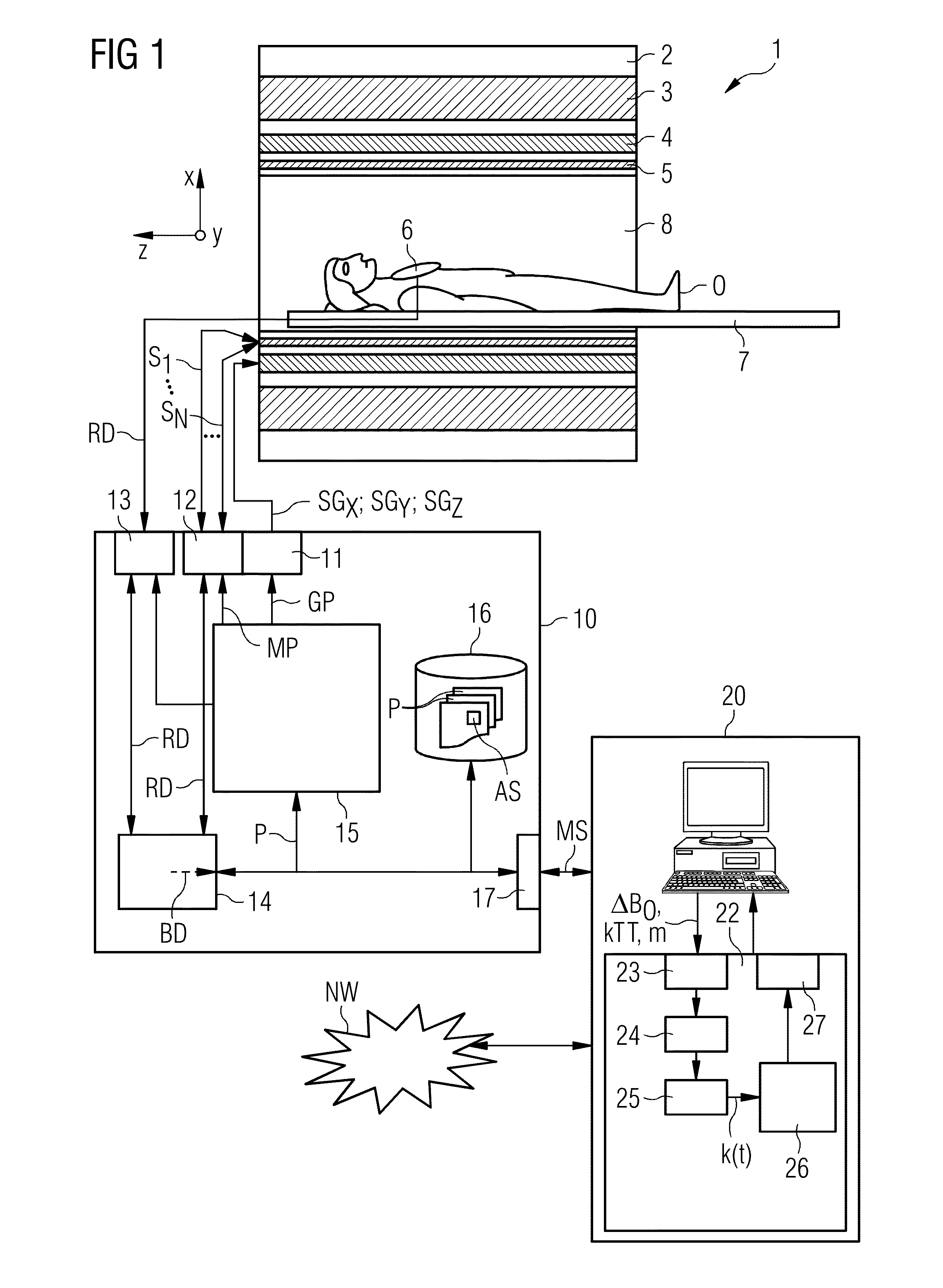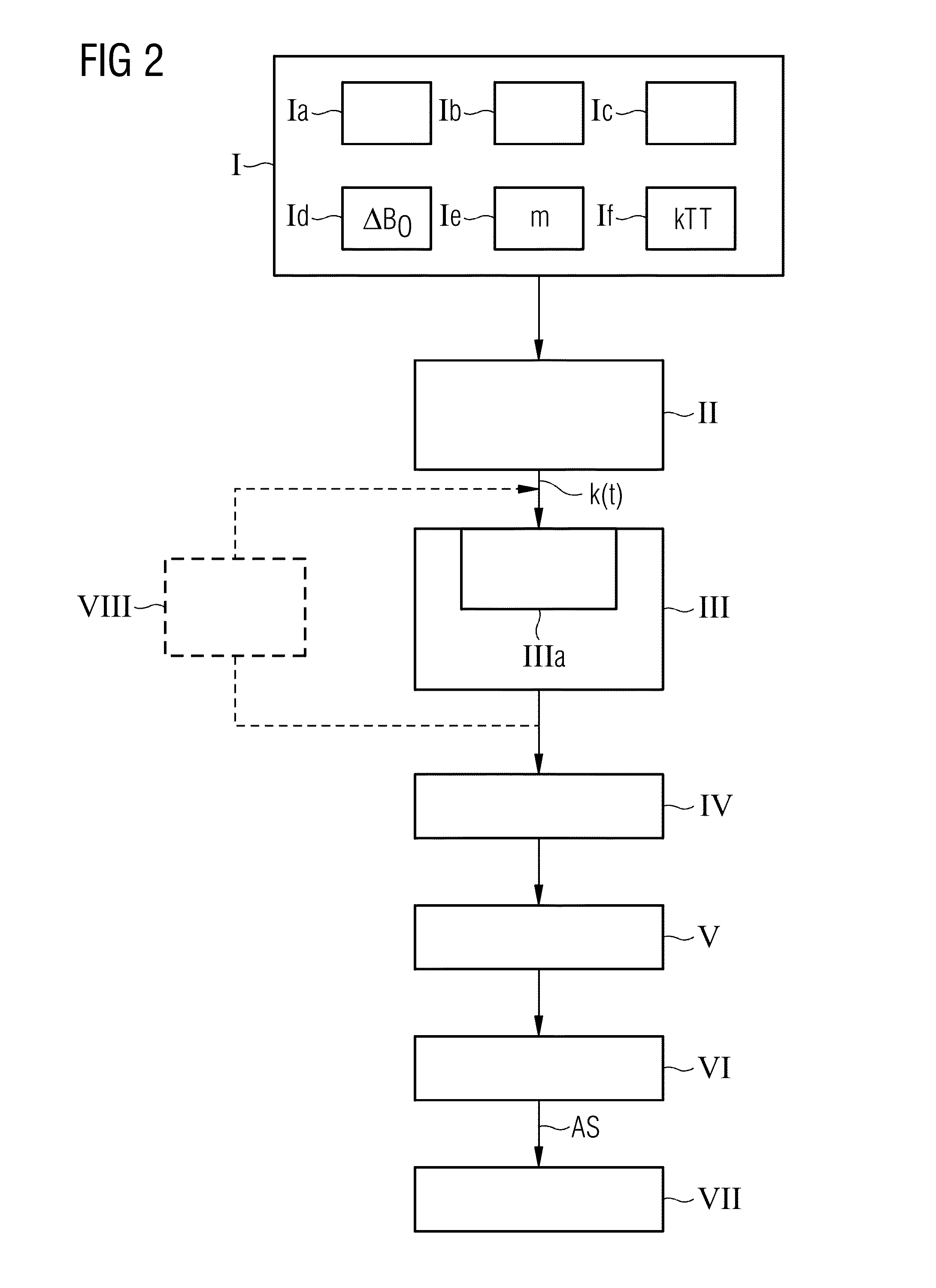Determination of a Magnetic Resonance System Activation Sequence
a magnetic resonance system and activation sequence technology, applied in the field of magnetic resonance system activation sequence determination, can solve the problems of increased risk of image artifact formation, one-dimensional, two-dimensional, multi-dimensional k-space trajectories for selective excitation, and substantially greater complexity, and achieve the effect of rapid and robust calculation of optimized k-space trajectories
- Summary
- Abstract
- Description
- Claims
- Application Information
AI Technical Summary
Benefits of technology
Problems solved by technology
Method used
Image
Examples
Embodiment Construction
[0052]FIG. 1 shows, in rough diagrammatical form, one embodiment of a magnetic resonance system 1. The magnetic resonance system 1 includes an actual magnetic resonance scanner 2 with an examination space 8 or patient tunnel disposed in the actual magnetic resonance scanner 2. A couch 7 may be moved into the patient tunnel 8, such that an object O to be examined (e.g., a patient / test subject) lying on the couch 7 may be positioned during an examination in a specific position inside the magnetic resonance scanner 2 relative to the magnet system and high-frequency system arranged inside. The object O may also be moved during a measurement between different positions.
[0053]Major components of the magnetic resonance scanner 2 are a basic field magnet 3, a gradient system 4 with magnetic field gradient coils in order to apply magnetic field gradients, as desired, in the x-, y- and z-directions, and a whole-body high-frequency coil 5. The reception of the magnetic resonance signals induce...
PUM
 Login to View More
Login to View More Abstract
Description
Claims
Application Information
 Login to View More
Login to View More - R&D
- Intellectual Property
- Life Sciences
- Materials
- Tech Scout
- Unparalleled Data Quality
- Higher Quality Content
- 60% Fewer Hallucinations
Browse by: Latest US Patents, China's latest patents, Technical Efficacy Thesaurus, Application Domain, Technology Topic, Popular Technical Reports.
© 2025 PatSnap. All rights reserved.Legal|Privacy policy|Modern Slavery Act Transparency Statement|Sitemap|About US| Contact US: help@patsnap.com



